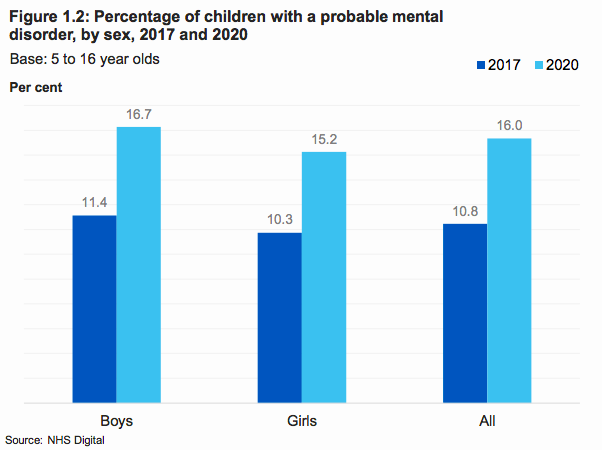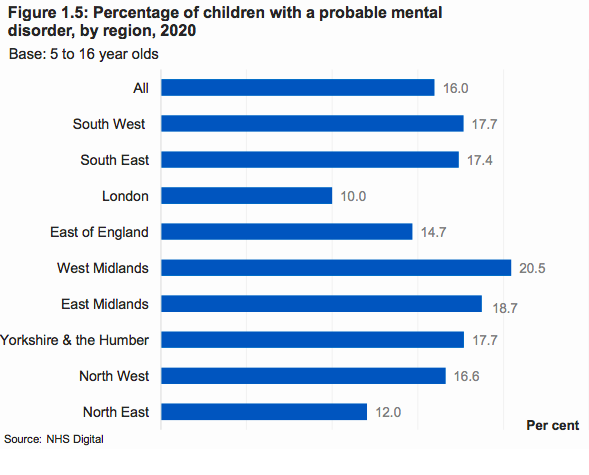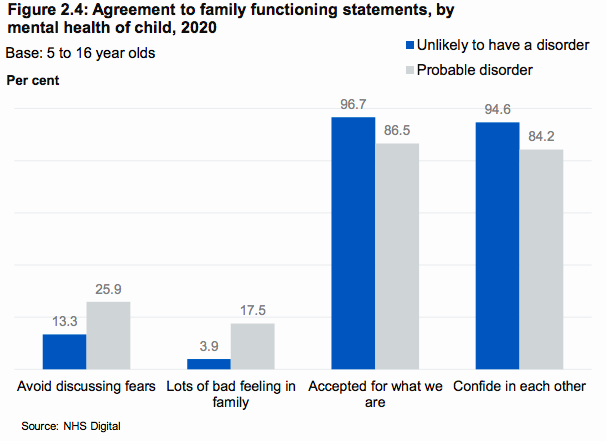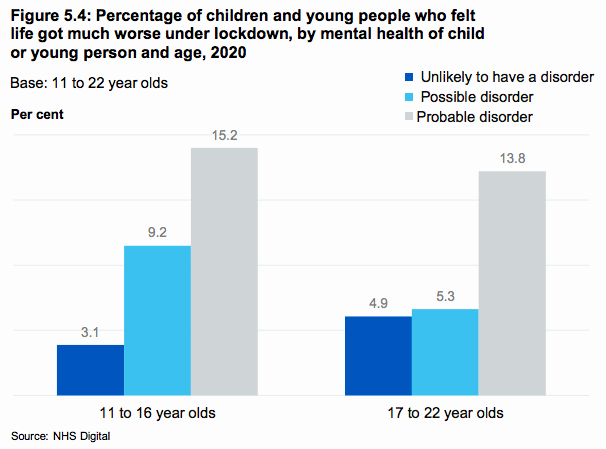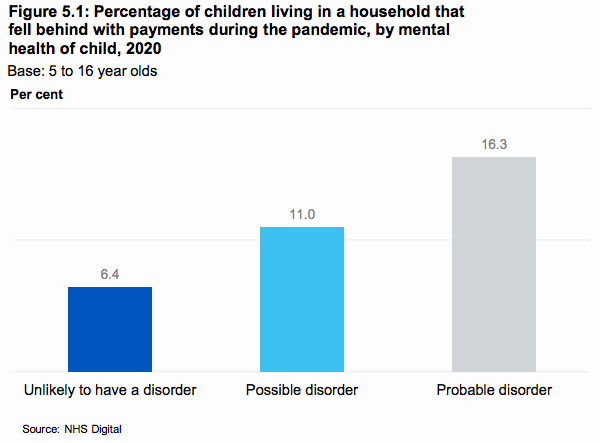Today, @NHSDigital have released the 2020 follow up to the 2017 survey into the #MentalHealth of children and young people in England.
 https://abs.twimg.com/emoji/v2/... draggable="false" alt="👉" title="Rückhand Zeigefinger nach rechts" aria-label="Emoji: Rückhand Zeigefinger nach rechts"> https://files.digital.nhs.uk/CB/C41981/mhcyp_2020_rep.pdf">https://files.digital.nhs.uk/CB/C41981...
https://abs.twimg.com/emoji/v2/... draggable="false" alt="👉" title="Rückhand Zeigefinger nach rechts" aria-label="Emoji: Rückhand Zeigefinger nach rechts"> https://files.digital.nhs.uk/CB/C41981/mhcyp_2020_rep.pdf">https://files.digital.nhs.uk/CB/C41981...
The prevalence of probable mental disorder among children and young people has increased by almost half (47.37 per cent) in just three years, from 1 in 9 children (10.8 per cent) in 2017 to 1 in 6 (16.0 per cent) this year.
The rates differ around the country. The West Midlands has the highest prevalence: more than 1 in 5 children and young people have a probable mental disorders in the region.
Almost twice as many children with a probable mental health disorder live in households who avoid discussing their fears compared those who are unlikely to have one a disorder. They were less likely to live in families who accept each other and can confide in one another.
42.8 per cent of all 11- to 16-year-olds felt that life has got "a little" or "much" worse due to the #Lockdown. Those with a probable mental health disorder found lockdown harder than their peers, with more than 1 in 6 saying life was much worse.
Children aged 5 to 16 years with a probable mental disorder were less likely to have received regular support from their school or college during lockdown (62.6 per cent compared with 76.4 per cent of children unlikely to have a mental disorder).
1 in 7 five- to 10-year-olds and 1 in 8 11- to 16-year-olds didn& #39;t have access to at least one adult at school or work to support their mental health during the #COVID19 pandemic.
These rates were highest among children with a probable disorder: 5- to 10-year-olds with a probable disorder were almost half as likely to have access to at least one adult at school than those unlikely to have a disorder.
Children with a possible or probable disorder experienced more negative changes in their household circumstances during the #Covid19 pandemic and lockdown. Increased financial strain was strongly associated with the mental health of children and young people.
1 in 10 five- to 10-year olds with a possible disorder and 1 in 11 with a probable disorder had a parent who lost a job during the pandemic. This was compared to 1 in 20 of those unlikely to have a disorder.
Children and young people with a probable mental health disorder were more likely to experience deprivation during the pandemic. 1 in 6 were in households which had fallen behind with bills, rent, or mortgages, compared to 1 in 15 of those unlikely to have a disorder.
Five- to 16-year-olds with a possible or probable disorder were more than twice as likely as their peers to be in a household which could not afford to buy food or had to use a food bank during the #COVID19 pandemic.

 Read on Twitter
Read on Twitter